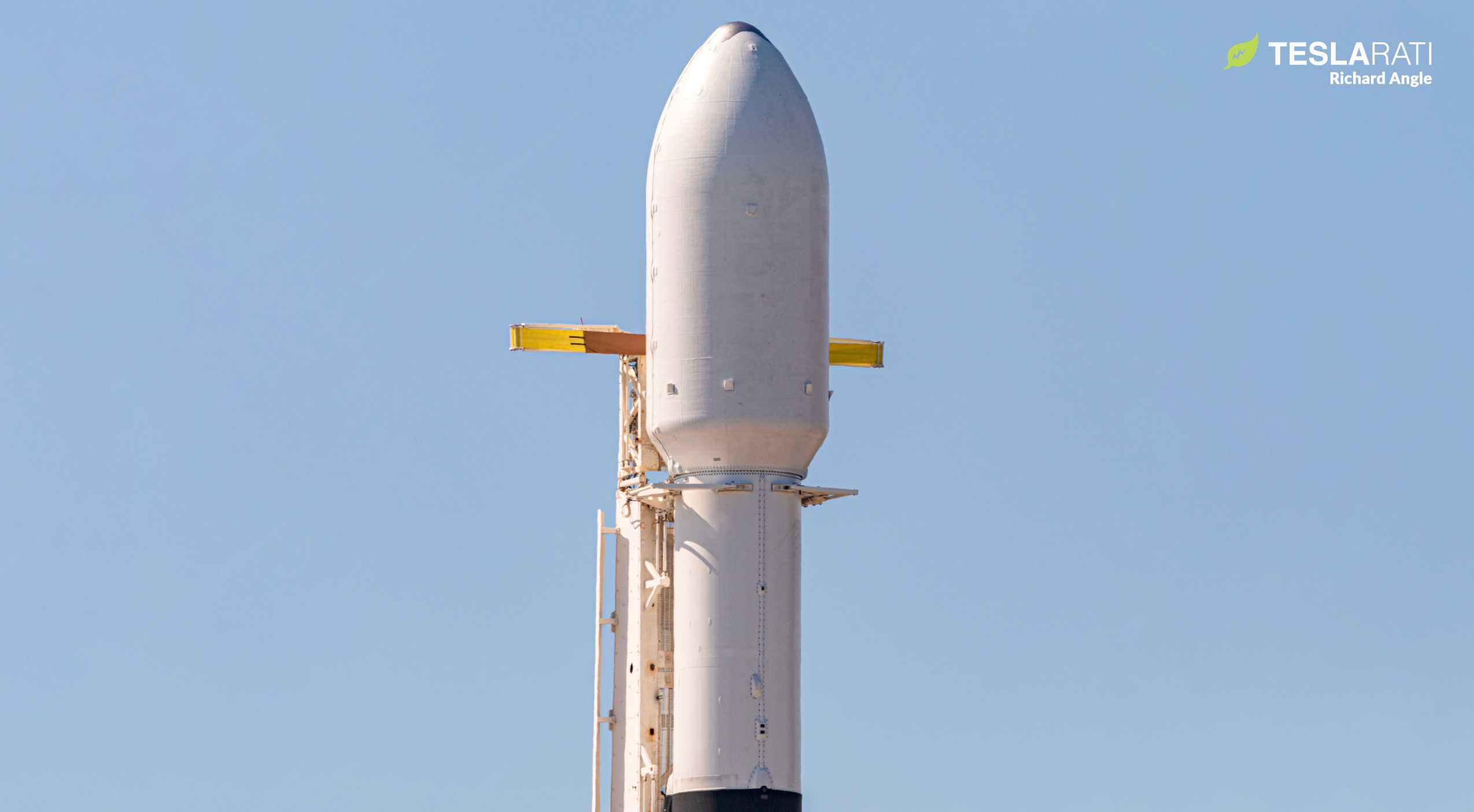

News
SpaceX may have missed a rocket booster landing but it snagged both nosecone halves
Although SpaceX sadly lost a record-breaking rocket booster and suffered a significant in-flight anomaly during its sixth Starlink launch, the company later revealed that it successfully recovered both of Falcon 9’s nosecone halves.
Starlink V1 L5 is now the second time ever that SpaceX – or anyone, for that matter – has successfully reused an orbital-class launch vehicle payload fairing, while the mission also marked the first time that SpaceX managed to recover a reused Falcon fairing. The burn from booster issues certainly isn’t fully salved, as twin fairing catchers Ms. Tree and Ms. Chief both missed their fairing catch attempts, but both twice-flown fairing halves were still successfully scooped out of the Atlantic Ocean before they were torn apart.
This is perhaps the most important milestone for SpaceX’s fairing recovery and reuse program since the first successful catch (June 2019) and first successful reuse (November 2019). With a twice-flown fairing now safely in hand for the first time, SpaceX will hopefully be able to dramatically expand its understanding of how flight-proven fairings – especially those that were fished out of the sea – stand up to launch conditions. If these flight-proven halves appear to be in great condition, it could be a boon for the near-term future of fairing recovery and reuse.
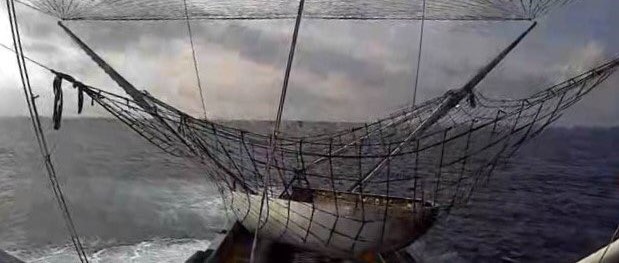
Catching fairings = hard
SpaceX has now been attempting to catch Falcon payload fairings for more than two years, beginning back in February 2018 after many months of additional development prior. The first successful catch came on the sixth post-launch attempt, followed immediately by a second successful catch two months later (August 2019). That back-to-back recovery appears to have been a bit of a fluke, however, with only one additional partial success (one of two ships caught a half) out of the five subsequent attempts.
By all appearances, accurately and reliably catching parasailing Falcon fairings is a spectacularly unforgiving challenge. That shouldn’t come as a huge surprise: each Falcon fairing will typically reach top speeds of 2.5+ km/s (1.5+ mi/s), technically reach space (100+ km or 63+ mi), and travel 500-1000+ km (300-600 mi) downrange before even remotely entering the vicinity of the ships designed to catch them out of the air.
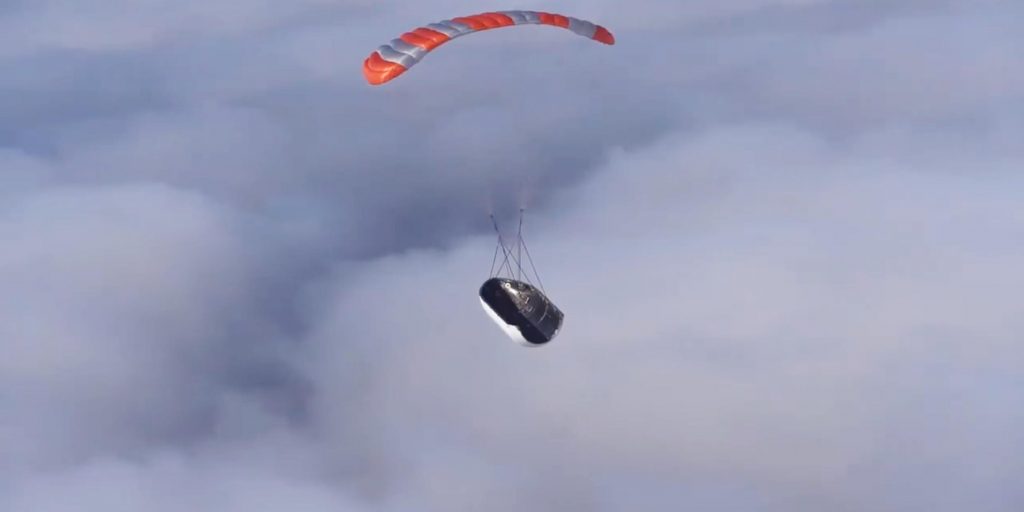
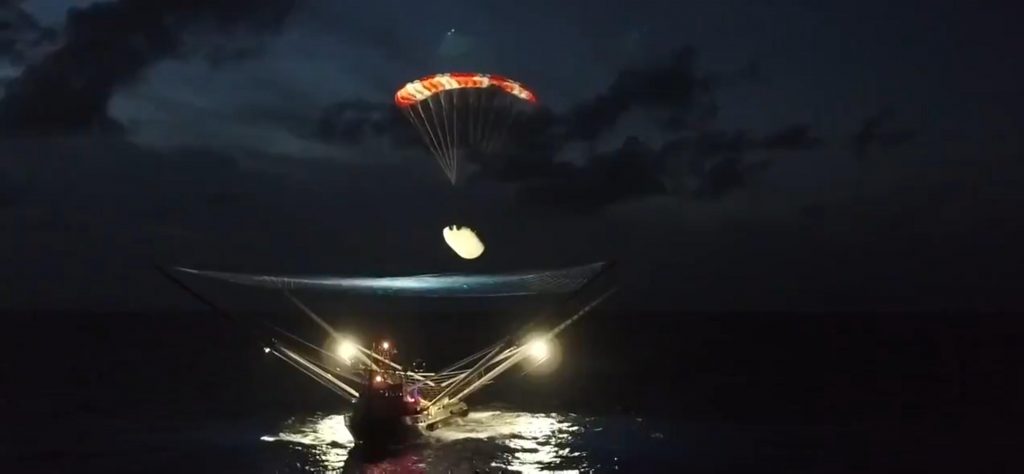
Likely weighing just ~1000 kg (2200 lb) apiece, the lightweight, sail-like nature of SpaceX’s carbon fiber-aluminum honeycomb payload fairings is both a blessing and a curse. While it means they can effectively reenter Earth’s atmosphere at hypersonic velocities with next to no heat shield, it also means that free-falling and parasailing fairing halves are at the full mercy of said atmosphere after reentry, bowing to winds and air currents like dandelions in a breeze.
Fairing halves ultimately spend something like 30-40 minutes parasailing through the atmosphere after parafoil deployment, creating vast uncertainties when it comes to local weather and the general behavior of the atmosphere. Even excluding weather, the average fairing catch attempt is roughly akin to throwing an average marble into a kitchen sink from more than a kilometer (0.8 mi) away.

Soft ocean landings: quite a bit easier
What SpaceX has effectively discovered is that while catching fairing halves may be almost comically difficult, recovering the same halves intact is easily doable if the goal instead is to gently pick them up off the ocean surface. Of the eleven catch attempts SpaceX has made, all but two were followed by recovery vessels extracting one or both fairing halves -intact – from the ocean.
Most notably, though, SpaceX has yet to reuse any of the three Falcon fairing halves that were caught with Ms. Tree. Instead, both the first and second reuses used fairing halves that had been fished onto recovery ships after gentle Atlantic Ocean landings.
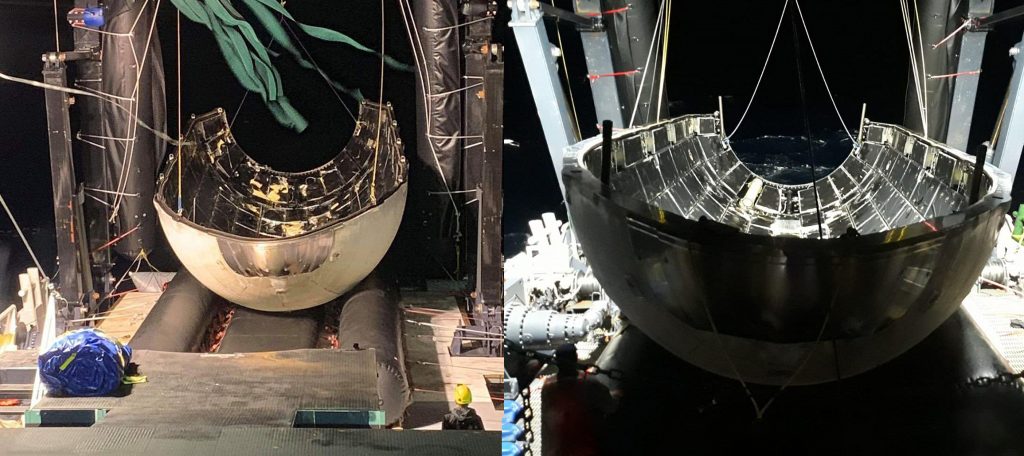
SpaceX has ultimately chosen to tackle the much harder reusability challenge – reusing fairings that have been partially immersed in saltwater – first, and done so quite successfully. Critically, the first reused fairing was unable to be recovered – even by sea – due to bad weather in the area, meaning that Wednesday’s recovery was a first for rare flight-proven fairing hardware. Given all the challenges Falcon fairings face with water sealing, corrosion, and contamination after water landings, it would be little surprise to learn that the second reused fairing is not exactly in pristine condition.
However, if it looks as good or better than SpaceX’s less-informed expectations, there’s a chance that it could open the floodgates for the full-scale pursuit of routine waterlogged fairing reuse. Even better, if the Starlink v0.9 and V1 L5 fairing halves have been recovered in great condition, there might be a chance to reuse Falcon fairings multiple times, following in the footsteps of the rocket boosters they launch on top of.
Check out Teslarati’s Marketplace! We offer Tesla accessories, including for the Tesla Cybertruck and Tesla Model 3.

News
Tesla is not sparing any expense in ensuring the Cybercab is safe
Images shared by the longtime watcher showed 16 Cybercab prototypes parked near Giga Texas’ dedicated crash test facility.

The Tesla Cybercab could very well be the safest taxi on the road when it is released and deployed for public use. This was, at least, hinted at by the intensive safety tests that Tesla seems to be putting the autonomous two-seater through at its Giga Texas crash test facility.
Intensive crash tests
As per recent images from longtime Giga Texas watcher and drone operator Joe Tegtmeyer, Tesla seems to be very busy crash testing Cybercab units. Images shared by the longtime watcher showed 16 Cybercab prototypes parked near Giga Texas’ dedicated crash test facility just before the holidays.
Tegtmeyer’s aerial photos showed the prototypes clustered outside the factory’s testing building. Some uncovered Cybercabs showed notable damage and one even had its airbags engaged. With Cybercab production expected to start in about 130 days, it appears that Tesla is very busy ensuring that its autonomous two-seater ends up becoming the safest taxi on public roads.
Prioritizing safety
With no human driver controls, the Cybercab demands exceptional active and passive safety systems to protect occupants in any scenario. Considering Tesla’s reputation, it is then understandable that the company seems to be sparing no expense in ensuring that the Cybercab is as safe as possible.
Tesla’s focus on safety was recently highlighted when the Cybertruck achieved a Top Safety Pick+ rating from the Insurance Institute for Highway Safety (IIHS). This was a notable victory for the Cybertruck as critics have long claimed that the vehicle will be one of, if not the, most unsafe truck on the road due to its appearance. The vehicle’s Top Safety Pick+ rating, if any, simply proved that Tesla never neglects to make its cars as safe as possible, and that definitely includes the Cybercab.
Elon Musk
Tesla’s Elon Musk gives timeframe for FSD’s release in UAE
Provided that Musk’s timeframe proves accurate, FSD would be able to start saturating the Middle East, starting with the UAE, next year.

Tesla CEO Elon Musk stated on Monday that Full Self-Driving (Supervised) could launch in the United Arab Emirates (UAE) as soon as January 2026.
Provided that Musk’s timeframe proves accurate, FSD would be able to start saturating the Middle East, starting with the UAE, next year.
Musk’s estimate
In a post on X, UAE-based political analyst Ahmed Sharif Al Amiri asked Musk when FSD would arrive in the country, quoting an earlier post where the CEO encouraged users to try out FSD for themselves. Musk responded directly to the analyst’s inquiry.
“Hopefully, next month,” Musk wrote. The exchange attracted a lot of attention, with numerous X users sharing their excitement at the idea of FSD being brought to a new country. FSD (Supervised), after all, would likely allow hands-off highway driving, urban navigation, and parking under driver oversight in traffic-heavy cities such as Dubai and Abu Dhabi.
Musk’s comments about FSD’s arrival in the UAE were posted following his visit to the Middle Eastern country. Over the weekend, images were shared online of Musk meeting with UAE Defense Minister, Deputy Prime Minister, and Dubai Crown Prince HH Sheikh Hamdan bin Mohammed. Musk also posted a supportive message about the country, posting “UAE rocks!” on X.
FSD recognition
FSD has been getting quite a lot of support from foreign media outlets. FSD (Supervised) earned high marks from Germany’s largest car magazine, Auto Bild, during a test in Berlin’s challenging urban environment. The demonstration highlighted the system’s ability to handle dense traffic, construction sites, pedestrian crossings, and narrow streets with smooth, confident decision-making.
Journalist Robin Hornig was particularly struck by FSD’s superior perception and tireless attention, stating: “Tesla FSD Supervised sees more than I do. It doesn’t get distracted and never gets tired. I like to think I’m a good driver, but I can’t match this system’s all-around vision. It’s at its best when both work together: my experience and the Tesla’s constant attention.” Only one intervention was needed when the system misread a route, showcasing its maturity while relying on vision-only sensors and over-the-air learning.
News
Tesla quietly flexes FSD’s reliability amid Waymo blackout in San Francisco
“Tesla Robotaxis were unaffected by the SF power outage,” Musk wrote in his post.

Tesla highlighted its Full Self-Driving (Supervised) system’s robustness this week by sharing dashcam footage of a vehicle in FSD navigating pitch-black San Francisco streets during the city’s widespread power outage.
While Waymo’s robotaxis stalled and caused traffic jams, Tesla’s vision-only approach kept operating seamlessly without remote intervention. Elon Musk amplified the clip, highlighting the contrast between the two systems.
Tesla FSD handles total darkness
The @Tesla_AI account posted a video from a Model Y operating on FSD during San Francisco’s blackout. As could be seen in the video, streetlights, traffic signals, and surrounding illumination were completely out, but the vehicle drove confidently and cautiously, just like a proficient human driver.
Musk reposted the clip, adding context to reports of Waymo vehicles struggling in the same conditions. “Tesla Robotaxis were unaffected by the SF power outage,” Musk wrote in his post.
Musk and the Tesla AI team’s posts highlight the idea that FSD operates a lot like any experienced human driver. Since the system does not rely on a variety of sensors and a complicated symphony of factors, vehicles could technically navigate challenging circumstances as they emerge. This definitely seemed to be the case in San Francisco.
Waymo’s blackout struggles
Waymo faced scrutiny after multiple self-driving Jaguar I-PACE taxis stopped functioning during the blackout, blocking lanes, causing traffic jams, and requiring manual retrieval. Videos shared during the power outage showed fleets of Waymo vehicles just stopping in the middle of the road, seemingly confused about what to do when the lights go out.
In a comment, Waymo stated that its vehicles treat nonfunctional signals as four-way stops, but “the sheer scale of the outage led to instances where vehicles remained stationary longer than usual to confirm the state of the affected intersections. This contributed to traffic friction during the height of the congestion.”
A company spokesperson also shared some thoughts about the incidents. “Yesterday’s power outage was a widespread event that caused gridlock across San Francisco, with non-functioning traffic signals and transit disruptions. While the failure of the utility infrastructure was significant, we are committed to ensuring our technology adjusts to traffic flow during such events,” the Waymo spokesperson stated, adding that it is “focused on rapidly integrating the lessons learned from this event, and are committed to earning and maintaining the trust of the communities we serve every day.”








